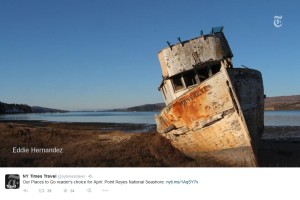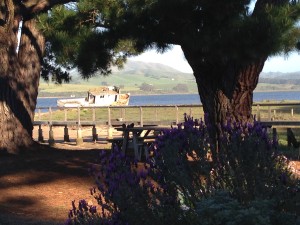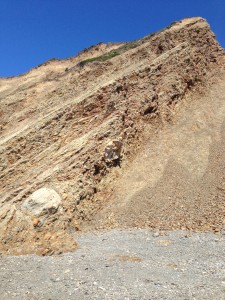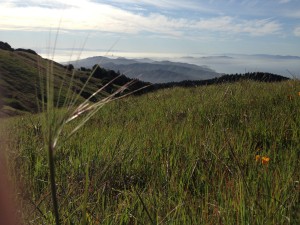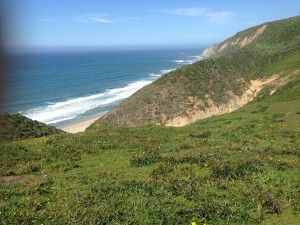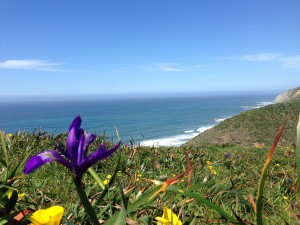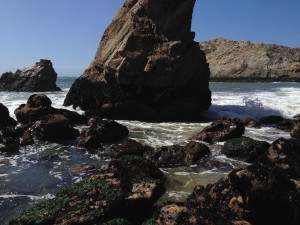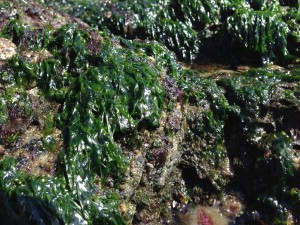Can a published book continue to evolve after it is printed?
Sadly, science books that once Changed My Life have since Become Obsolete.
Nigel Calder’s Restless Earth and Violent Universe, based on BBC documentaries, were marvelous, exciting, illustrated, and readable for the popular audience. Restless Earth presented plate tectonics, and Violent Universe presented current events in cosmology for the later ’60’s.
I recently retrieved my old copies from the basement, and sadly concluding they were hopelessly out-of-date, I discarded them. That made me very sad, because I couldn’t read them again myself, and I couldn’t share them enthusiastically with others.
Very Sad. Very Melancholy.
But recently, I stumbled across evidence of evolution in science books.
I really love Stephen Drury’s Stepping Stones: the Making of our Home World [1999]. It covers current events in geology, chemistry, and astronomy bearing on the mystery of ‘how did life get started’. The chemistry, in particular, was just barely within my comprehension from high school advanced biology. The current events were lurid, gaudy, grand, and glorious, like dinosaurs to an eight-year-old boy.
https://www.amazon.com/Stepping-Stones-Making-Stephen-1999-09-23/dp/B01FGQ4KXA/ref=sr_1_2?ie=UTF8&qid=1473602420&sr=8-2&keywords=drury+stepping+stones
However, current events in science are rapidly overtaken nowadays, so Stepping Stones was out-of-date. I searched in vain for another book with the same wide scope across scientific disciplines, but no one else had tried to do what Drury did… give an overview of the whole glorious mess of the way Earth might have become the cradle of life… at a rich level of logic and detail just barely within my layman’s comprehension.
I despaired for years.
Then, this year, by accident, I stumbled across Drury’s attempt to publish a revised edition.
– A free revised edition…
– Published on the internet.
https://earthstep.wordpress.com/
Stepping Stones: the Making of our Home World
Steve Drury (Revised edition 2016)
Here’s what is so cool about that…
– A book published on the internet might never go out of date… as long as the author lived, and dedicated himself to constant revision and updates.
– Free is awesome. Particularly for an entry-level college textbook.
– Published on the internet permits reviews and comments from readers… so the writer could constantly receive feedback… and opportunities to amend hard-to-understand presentations. And readers could also add ideas and references.
Here’s what is not so cool about that…
– Printed books are much easier to read… especially for us who grew up with books.
– Reading a book online has many virtues… but comfortable reading is not one of them.
Drury considered publishing the revision as a pdf. But a published pdf has the same flaw as a printed book… it cannot constantly evolve, update, comment, and review itself.
I am an amphibious reader. I have learned to read in print or online, and I’ve learned improvisations for working back and forth across both environments.
– Most friends in my generation and older still read primarily in the print format. They generally say they like the ‘feel’ of a printed book. I bet they just prefer the printed book experience.
– I prefer the digital book. It is profoundly portable, self-lighting, and the type-size adapts to my aging eyes. I like its bookmarking, text-search, and extract-sharing functions, and I LOVE being able to download the first chapter for free from Kindle/Amazon to review a book before buying.
– Still, I own lots of print publications, and get lots of them from the library, so I do a lot of both digital and print reading. For example, I read the NY Times almost exclusively on iPad, but still read the New Yorker and NY Review of Books in print.
In an online comment to Drury, mostly to praise and thank him for the effort and dedication to produce this revision and publish it for free, I also suggested he share with his readers my improvised system for reading his revision offline.
– I print each chapter as a pdf [from my browser], and then transfer each chapter to my Kindle app on my iPad and iPhone. So I can read them either on my porch with a beer [iPad style], or while waiting in line anywhere [iPhone style].
– This is still slightly awkward, and requires extra effort, and is too geeky and techie for popular use. But it totally works for me, and may work Just Fine for younger geeks and techies.
And now I wonder… How should books and authors and readers… and the writing and reading experience… evolve?
Free is awesome. But how will writers make a living?
Providing free updates to a book is awesome. But what a lot of work!
– Drury has an interesting work model. He works for the Open University.
○ https://en.wikipedia.org/wiki/Open_University
○ Which is a a public distance learning and research university… a fascinating thing of the future itself.
– A lot of the revisions that went into the current online revision of Stepping Stones started as blog entries in Earth Pages. [https://earth-pages.co.uk/about/] So Drury already has an efficient drafting-review-and-revision workflow for supporting constant evolution and revision in front of his reading public.
○ Is this a model for future authorship? Rough drafts as posts, review-and-revision in the comments sections, and eventual formal publication in a larger book-like-architecture?
– How do you make page references in an online text? Permalinks, I bet. Which is another awesome feature of digital reading… links embedded in the text that take you for references and further reading.
Blah, blah, blah.
– I’m tired of writing now. I want to go read.
I wanted to share with you. But I am lazy, and have a short attention span, and demand entertainment and instant gratification. [Which is one of the Many Reasons why I am a crappy blogger.]









